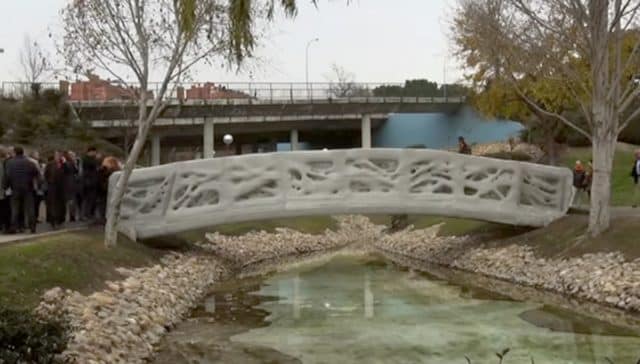The technology that is shaping bridge construction

Technology and engineering go hand in hand. They rely each other to further progress innovation across all sectors. For bridges, technology has allowed designs to push the boundaries of what was once thought possible.
New designs and improving maintenance services increase efficiency and reduce waste with the help of technology. While some innovations are moving into the mainstream, others can give us an indication of which direction bridge engineering is heading in. Here, we look at the most promising technology that is creating the future of bridge construction.
Geosynthetic stabilization
The difference in composition between roads and bridges can create some structural disparity. This can result in a transition between the two structures which can leave a bump in the road. This is often because, while roads are stationary, some bridges need movement for stability.
Traditionally, reinforced concrete would have been used as support pillars for structural integrity in bridges. Today, this problem is being alleviated by geosynthetic reinforced soil in integrated bridge systems. The soil is used in alternating layers between geosynthetic reinforcement to provide support for the bridge, using friction to create stability. This can also help to alleviate the bump in the transition.
There are numerous benefits to geosynthetic reinforced soil in bridge construction, including quicker construction time. With simple machinery and tools needed in construction and low costs of material, this technique can also save up to 60 percent of costs compared to standard public bridges.
Furthermore, the reduction of the bump also decreases the need for regular maintenance to both the bridge and vehicles that use it. The simple design also means that it can be employed in numerous environments and constructed in less fair-weather conditions that current alternatives.
Building Information Modelling (BIM)
While digital constructions are common in bridge engineering and across the construction sector in general, increasing digital capabilities are changing the way that structures are made in a collaborative effort.
Computer-Aided Design (CAD) has allowed engineers to design structures for reference and measurement. However, newer programming in BIM allows for workers across the construction process to contribute their input to improve workflow. By calculating layers of metadata, BIM can render a model with specific detail for each industry involved, from design to manufacturing and construction.
This process, therefore, allows problems to be solved early in the design process, including clash detection and stability. The increased efficiency will also help to save costs.
Printed pontes
The innovation of 3D-printing has revolutionized product design. Today, the process is being used to create larger structures to change how we think about construction.
For bridges, this technique is in its early stages, with the first 3D-printed bridge only being completed in 2016 in Madrid. This used additive manufacturing, layering concrete to form the crossing over a small river.
However, the technique can be used with a variety of materials, including steel, for added strength.
As the technology progresses, the benefits are becoming increasingly clear. Firstly, it can reduce the amount of cement and steel required in construction, lowering costs and reducing emissions. 3D-printers also don’t need formwork, which in turn reduces waste. Finally, it means that bridges can be built in any shape.
While the technology is not quite ready for full-scale expansion, it’s something to look out for in the future.
Technology and engineering in construction, and bridges in particular, will continue to innovate. This innovation must be welcomed to tackle the modern issues that the sector faces, including sustainability, waste, and the economy. Whether geosynthetic soil or 3D printed walkways will become standard practice in construction is yet to be seen, but exploring alternative options to contemporary practices is often what leads to the best design.
Carlos Arias is International Development Manager at structural steel fabricators, Cleveland Bridge.
